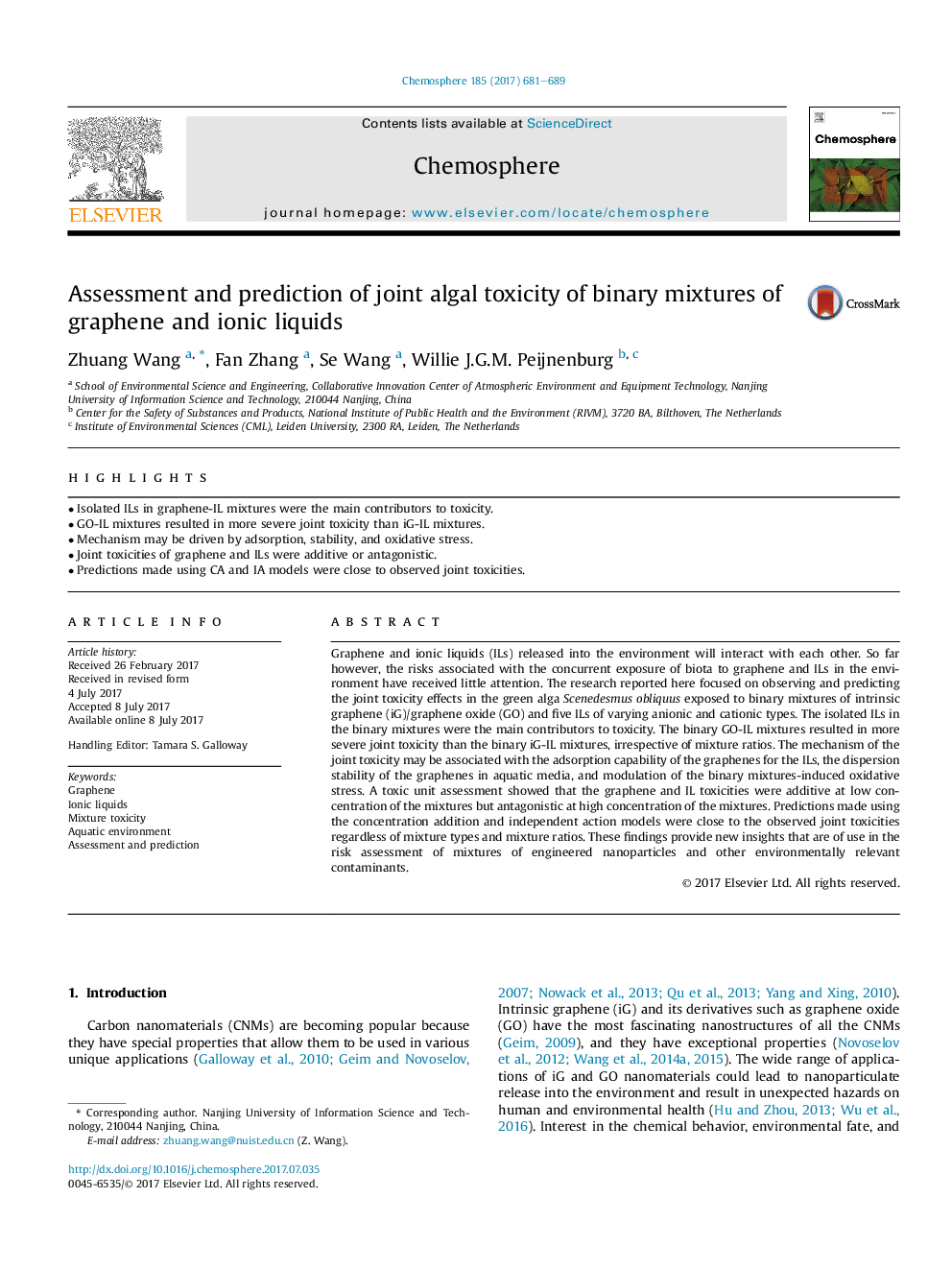| کد مقاله | کد نشریه | سال انتشار | مقاله انگلیسی | نسخه تمام متن |
|---|---|---|---|---|
| 5746757 | 1618786 | 2017 | 9 صفحه PDF | دانلود رایگان |
- Isolated ILs in graphene-IL mixtures were the main contributors to toxicity.
- GO-IL mixtures resulted in more severe joint toxicity than iG-IL mixtures.
- Mechanism may be driven by adsorption, stability, and oxidative stress.
- Joint toxicities of graphene and ILs were additive or antagonistic.
- Predictions made using CA and IA models were close to observed joint toxicities.
Graphene and ionic liquids (ILs) released into the environment will interact with each other. So far however, the risks associated with the concurrent exposure of biota to graphene and ILs in the environment have received little attention. The research reported here focused on observing and predicting the joint toxicity effects in the green alga Scenedesmus obliquus exposed to binary mixtures of intrinsic graphene (iG)/graphene oxide (GO) and five ILs of varying anionic and cationic types. The isolated ILs in the binary mixtures were the main contributors to toxicity. The binary GO-IL mixtures resulted in more severe joint toxicity than the binary iG-IL mixtures, irrespective of mixture ratios. The mechanism of the joint toxicity may be associated with the adsorption capability of the graphenes for the ILs, the dispersion stability of the graphenes in aquatic media, and modulation of the binary mixtures-induced oxidative stress. A toxic unit assessment showed that the graphene and IL toxicities were additive at low concentration of the mixtures but antagonistic at high concentration of the mixtures. Predictions made using the concentration addition and independent action models were close to the observed joint toxicities regardless of mixture types and mixture ratios. These findings provide new insights that are of use in the risk assessment of mixtures of engineered nanoparticles and other environmentally relevant contaminants.
Journal: Chemosphere - Volume 185, October 2017, Pages 681-689
